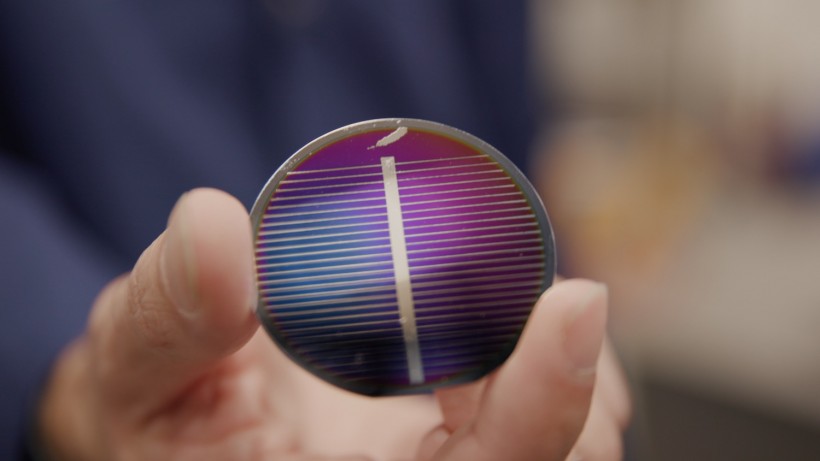The famed space company of Jeff Bezos, Blue Origin, has a new development from within. It centers on developing solar power cells that aim to draw energy from the Sun but also require another resource to make it. The company aims to make solar cells on the Moon last longer and to do this, it needs lunar regolith to make it happen.
If you are unfamiliar with lunar regolith, these are the Moon's dust and ground, making up the natural satellite close to the Earth, which now begs the question of why they need it.
Blue Origin to Use Moon Dust for Solar Cell Development

(Photo : Blue Origin)
Blue Origin's latest blog post details a new focus on its goal to go to the Moon, especially as it claims it is currently developing a new power source to use for its stay up in the cosmos. A recent development centers on creating solar power cells and transmission wires from lunar regoliths, a venture they started in 2021.
The company calls this the "Blue Alchemist," and it centers on "making regolith simulants that are chemically and mineralogically equivalent to lunar regolith."
The private space company uses this as a key element in their solar cell development to make it last longer on the Lunar surface.
According to CNET, Blue Origin is using all available materials here on Earth to replicate moon dust, particularly for its sustainable creation and future use in its lunar mission.
Read Also: Blue Origin will Send an All-Female Crew to Suborbital Space Led by Jeff Bezos' Girlfriend
Why Does Blue Origin Need Lunar Regolith?
According to Blue Origin, "For protection from the harsh lunar environment, solar cells need cover glass; without it, they would only last for days."
"Our technique uses only molten regolith electrolysis byproducts to make cover glass that enables lunar lifetimes exceeding a decade," they added.
Blue Origin and its Ventures
Blue Origin is still in the space race, and it is still a significant company in the present, as it has different projects, including its rockets to use for its commercial space offers and collaborations with agencies. The famous space company is now fighting for a contract from NASA against Northrop Grumman for a crewed lunar vehicle to be used soon.
Last year, the anticipated launch of its New Shepard rocket saw a significant test flight, having yet to be a crew present for this venture. As everything in the launch was in place and its lift-off was successful, the team had to abort the mission amidst its climb towards 9,000 feet as the rocket burned after reaching the suborbital trajectory.
Despite their hit-and-miss on the many programs they have for their rocket developments, Blue Origin is still optimistic about their space presence and ventures in the future. It includes their planned journey to the Moon, which they aim to make sustainable and powered by the Sun via its solar power cells that utilize the Lunar Regolith to protect it from damage.
Related Article: NASA Chooses Blue Origin's New Glenn Rocket for ESCAPADE Mission to Mars









